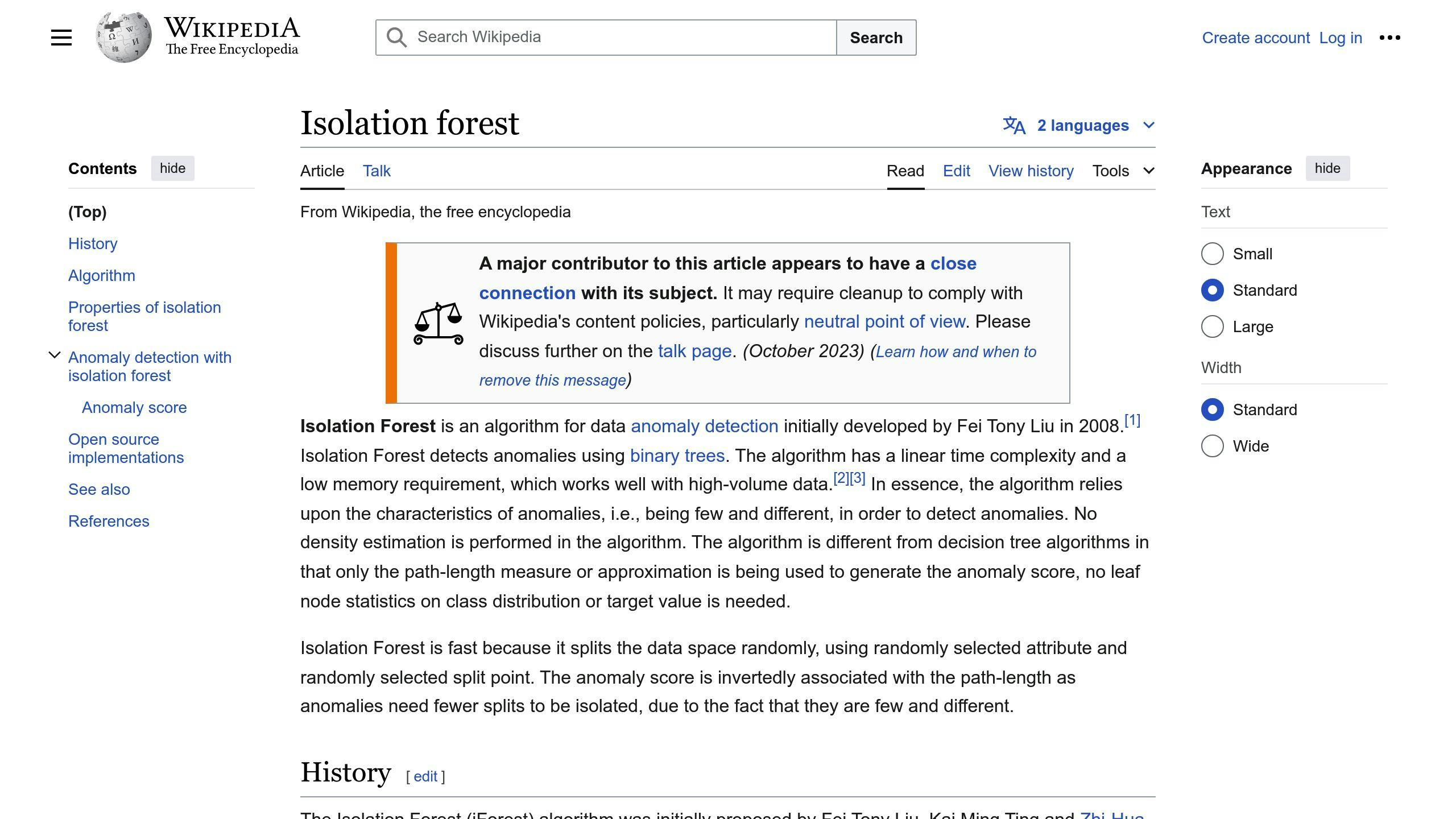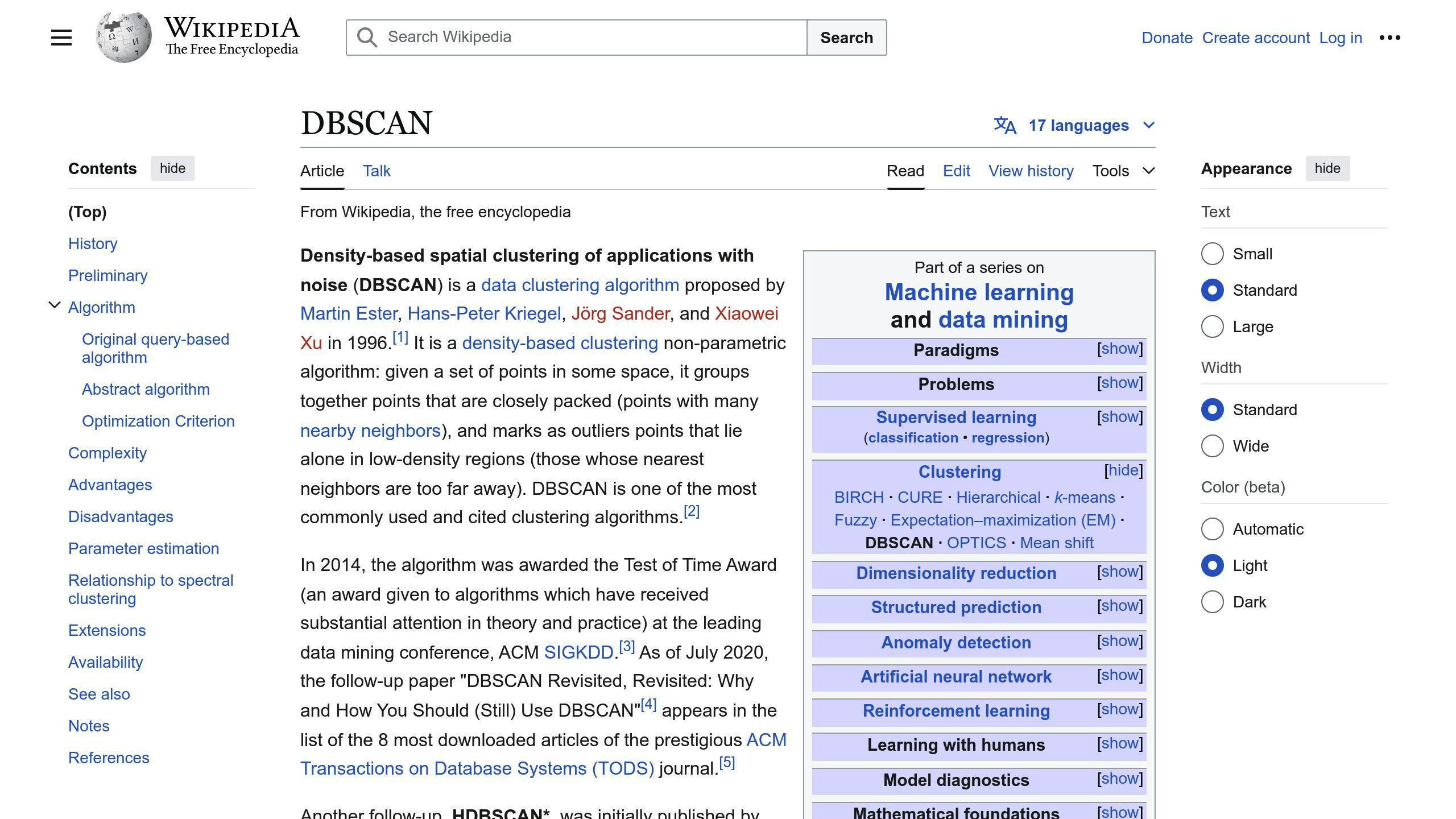Spot weird property data fast with AI-powered tools. Here's what you need to know:
- Why it matters: Outliers can mess up property valuations big time
- Old vs. New: Traditional methods are slow and biased, AI is quick and accurate
- Top AI methods:
- Isolation Forest: Fast and flexible for complex data
- DBSCAN: Great for location-based analysis
- Best tools: Proptrends leads the pack with its Investment Score and market forecasting
Quick comparison of AI tools:
| Tool | Outlier Detection | Market Forecasting | Investment Score |
|---|---|---|---|
| Proptrends | ✓ | ✓ | ✓ |
| House Canary | ✓ | ✓ | - |
| Skyline AI | ✓ | ✓ | - |
Bottom line: AI outlier detection is a game-changer for real estate pros in 2024. It helps you spot hidden opportunities and make smarter investment choices.
Related video from YouTube
Basic Math Methods to Find Unusual Data
In real estate, spotting odd property data points is key for accurate valuations. Let's look at some simple statistical methods to help you find these outliers and make smarter decisions with your real estate data.
Using Z-Scores
Z-scores help detect outliers in property data by showing how far a data point is from the average. Here's why they're useful:
- They standardize data, making it easy to compare different datasets.
- They work best with normally distributed data, which is common for property prices in a specific area.
To use Z-scores:
- Find the average and standard deviation of your dataset.
- Calculate the Z-score for each point: Z = (x - average) / standard deviation.
- Flag points with a Z-score above 3 or below -3 as possible outliers.
For example, say you're looking at credit scores for mortgage applicants. If the average score is 650.53 with a standard deviation of 96.65, a credit score of 850 would have a Z-score of 2.06. This suggests it's an unusual data point worth checking out.
The IQR Method
The Interquartile Range (IQR) method works well for real estate data that might be skewed. It's not as affected by extreme values, making it great for property markets with a wide range of prices.
Here's how to use the IQR method:
- Sort your data from lowest to highest.
- Find the first (Q1) and third (Q3) quartiles.
- Calculate the IQR: IQR = Q3 - Q1
- Find the lower and upper limits:
- Lower limit = Q1 - 1.5 * IQR
- Upper limit = Q3 + 1.5 * IQR
- Mark any points outside these limits as outliers.
Let's look at a real estate example. Say you're analyzing house prices in a neighborhood:
Q1 (25th percentile) = $200,000 Q3 (75th percentile) = $350,000 IQR = $350,000 - $200,000 = $150,000
Lower limit = $200,000 - (1.5 * $150,000) = -$25,000 Upper limit = $350,000 + (1.5 * $150,000) = $575,000
Any house priced below -$25,000 (which can't happen) or above $575,000 would be flagged as an outlier. This helps you spot properties that are way overpriced or underpriced compared to the neighborhood average.
Box Plot Charts
Box plots, also called box-and-whisker plots, show your data distribution visually and make finding outliers easy. They're especially handy when comparing multiple features of real estate properties.
A box plot has these parts:
- The "box" shows the IQR (middle 50% of the data).
- The line in the box is the median.
- The "whiskers" usually go out to 1.5 times the IQR.
- Points past the whiskers might be outliers.
For example, when looking at property sizes, a box plot might show that most homes in an area are between 1,500 and 2,500 sq ft. Any properties much smaller (like 500 sq ft) or bigger (like 5,000 sq ft) would stand out as outliers.
"Box and whisker plots are a great chart to use when showing the distribution of data points across a selected measure." - Tableau
These methods can help you spot unusual data in your real estate analysis, leading to more accurate valuations and better decision-making.
Modern AI Methods
In 2024, real estate pros are using smart AI to spot property data oddities like never before. Let's check out some top AI methods shaking up the industry.
Isolation Forest

Isolation Forest is a rockstar at finding weird stuff in big, messy real estate data. It's all about singling out the oddballs instead of focusing on the normal stuff.
Why's it catching on?
- It's fast. Like, really fast.
- It's accurate. Catches things other methods miss.
- It's flexible. Works with all sorts of property info.
Real-world example? A big real estate site used it to crunch 500+ metrics for property values. The results? 98% accurate for listed homes, 93% for unlisted ones. Not too shabby.
DBSCAN for Location Data

DBSCAN (fancy name, right?) is another AI method making waves, especially for location stuff.
It's great at:
- Spotting weird property clusters on a map.
- Telling the difference between real outliers and random noise.
- Handling tons of data at once.
Investors use DBSCAN to find up-and-coming neighborhoods or properties that don't quite fit the mold. It's like having a super-smart real estate scout.
AI Method Showdown
Let's see how these AI methods stack up:
| Method | Speed | Accuracy | Best For |
|---|---|---|---|
| Isolation Forest | Super Fast | High | Big, complex data |
| DBSCAN | Fast | Great for location | Map-based analysis |
| Old-school Z-Score | So-so | Okay | Simple, normal data |
Both new methods beat the old way, but which one you pick depends on what you're doing.
"Try different AI tricks on your data and see what works best." - Some smart data person
Want to use this stuff? Check out Proptrends (https://proptrends.io). They've got AI tools that use these fancy algorithms to help you find property investment gold.
As we roll through 2024, using these AI methods isn't just cool - it's becoming a must to stay in the game. With Isolation Forest and DBSCAN, real estate folks can make smarter choices, spot market tricks, and end up with better investments.
sbb-itb-9b72b50
AI Tools for Finding Unusual Data
In 2024, real estate pros are using AI tools to spot weird data and get ahead. Let's check out some top options and how they're changing property analysis.
Proptrends AI Features

Proptrends is shaking things up in real estate investing. This AI platform has tools to find outliers and hidden gems:
- Investment Score: Crunches tons of data to score properties, helping you spot odd opportunities fast.
- Market Forecasting: Predicts trends accurately, flagging properties that don't fit the mold.
- Data Integration: Connects multiple data sources, showing a full market picture and highlighting weird data points.
Sarah Chen, a real estate investor, says: "Proptrends helped me find an undervalued property others missed. Its AI spotted strange price patterns in a gentrifying area, leading to a 25% ROI in 18 months."
DIY AI Tools
Want to build your own AI for outlier detection? Here's a quick guide:
1. Data Collection
Grab diverse real estate data: property features, past prices, location info.
2. Algorithm Selection
Pick algorithms like Isolation Forest or DBSCAN based on your needs.
3. Model Training
Use your data to train the AI, focusing on finding patterns and oddities.
4. Testing and Refinement
Keep testing against known outliers and fine-tune for accuracy.
5. Integration
Add your AI tool to your current workflow for smooth property analysis.
Building your own tool takes time and know-how. For most real estate pros, it's easier to use existing tools like Proptrends.
Tool Features Chart
Here's a quick comparison of popular AI tools:
| Feature | Proptrends | House Canary | Skyline AI |
|---|---|---|---|
| Outlier Detection | ✓ | ✓ | ✓ |
| Market Forecasting | ✓ | ✓ | ✓ |
| Investment Score | ✓ | - | - |
| Data Integration | ✓ | ✓ | ✓ |
| Commercial Focus | - | - | ✓ |
| Error Rate | < 5% | < 3% | Not specified |
Proptrends stands out for its all-around approach to investment analysis and outlier detection across different property types.
As AI gets smarter, these tools are becoming must-haves for real estate pros looking to spot weird data and make smart choices. By using machine learning and big datasets, investors can find opportunities others might miss in today's tough market.
How to Use These Methods
Let's get practical. Here's how to apply outlier detection techniques in real estate analysis:
Data Setup and Limits
First, prep your data:
- Clean it up. Fix errors, standardize formats.
- Calculate key stats: mean, median, standard deviation.
-
Set realistic limits using the Interquartile Range (IQR) method:
- Find Q1 (25th percentile) and Q3 (75th percentile)
- Calculate IQR = Q3 - Q1
- Set lower limit = Q1 - 1.5 * IQR
- Set upper limit = Q3 + 1.5 * IQR
Here's an example with home prices:
Q1 = $200,000, Q3 = $350,000, IQR = $150,000
Lower limit = $200,000 - (1.5 * $150,000) = $-25,000 Upper limit = $350,000 + (1.5 * $150,000) = $575,000
Anything below $-25,000 (impossible) or above $575,000? Flag it as a potential outlier.
Handling Multiple Property Features
Real estate data is complex. Here's how to deal with it:
- Focus on key features: price, square footage, location.
- Use multivariate methods like Isolation Forest. Proptrends' AI tools are great for this.
- Create scatter plots to visualize relationships between features.
- Apply Z-scores carefully, feature by feature. Flag anything beyond +/-3 for a closer look.
Double-Check Your Findings
Found potential outliers? Great. Now verify:
- Cross-reference with other data sources. Does it match recent sales data?
- Ask the experts. Local agents or appraisers might have insights.
- Document everything. Which data points did you flag and why?
- Run analyses with AND without outliers. Compare the results.
- Use AI tools like Proptrends to automate and enhance your process.
Remember, the goal isn't to blindly remove outliers. It's to understand why they exist and what they tell you about the market.
"When you decide to remove outliers, document the excluded data points and explain your reasoning." - Jim, Real Estate Analysis Expert
Outliers aren't just noise. They're often signals of something interesting happening in the market. Use these methods to spot them, but always dig deeper to understand what they mean.
Summary
Spotting unusual data points in real estate pricing is key for smart decision-making. Let's recap the main points:
Clean Data First
Start with clean data. It's the foundation of accurate real estate datasets. By 2030, we're looking at 572 Zettabytes of data. That's a lot to manage!
Pick the Right Method
Different techniques work for different data:
- Z-score: Good for normal distributions. Flag points beyond ±3 standard deviations.
- IQR: Great for skewed data (common in real estate). Look for points below Q1 - 1.5_IQR or above Q3 + 1.5_IQR.
- AI methods: For complex data, try Isolation Forest or DBSCAN.
Use AI Tools
AI is changing the game. Tools like Proptrends offer AI-powered research that can spot opportunities you might miss.
Remember Context
Not every extreme value is an outlier. As Rémi Domingues says:
Outlier detection is a notoriously hard task: detecting anomalies can be difficult when overlapping with nominal clusters.
Always consider market trends and your industry knowledge.
Keep Monitoring
Outlier detection isn't a one-and-done deal. Keep auditing and cleaning your data. Use automated tools to update old records and track data health.
FAQs
What is the best algorithm for outlier detection?
There's no one-size-fits-all answer, but the Z-score method is a solid starting point for outlier detection in real estate data.
Why? It's simple, effective, and widely used. The Z-score measures how far a data point is from the mean in terms of standard deviations. For normal distributions, it works great - about 99.7% of data falls within 3 standard deviations of the mean.
But it's not perfect. Natasha Sharma from Towards Data Science points out:
"The Z-score method is a statistically based approach for outlier detection."
She adds that it works best with normally distributed data, which isn't always the case in real estate.
For more complex scenarios, you might want to look at:
- Isolation Forest (good for high-dimensional data)
- DBSCAN (great for spatial data like property locations)
- One-class Support Vector Machines (OCSVM) (performs well in real estate price analysis)
The "best" algorithm depends on your dataset and goals. It's often smart to try multiple methods and compare results.
If you're using Z-scores, start with a threshold of ±3. Data points beyond this range might be outliers. But don't be afraid to adjust based on your specific needs and data.


